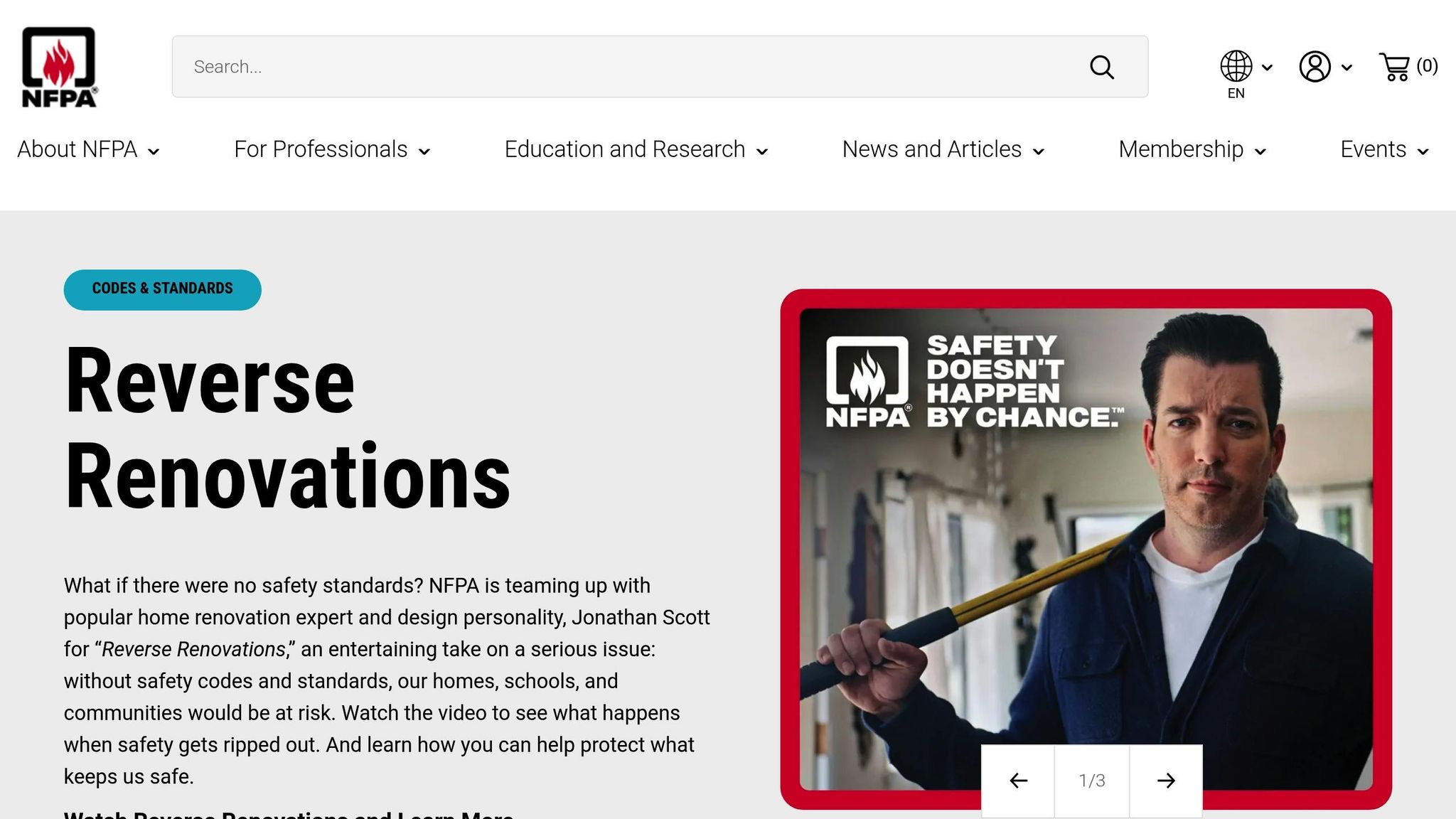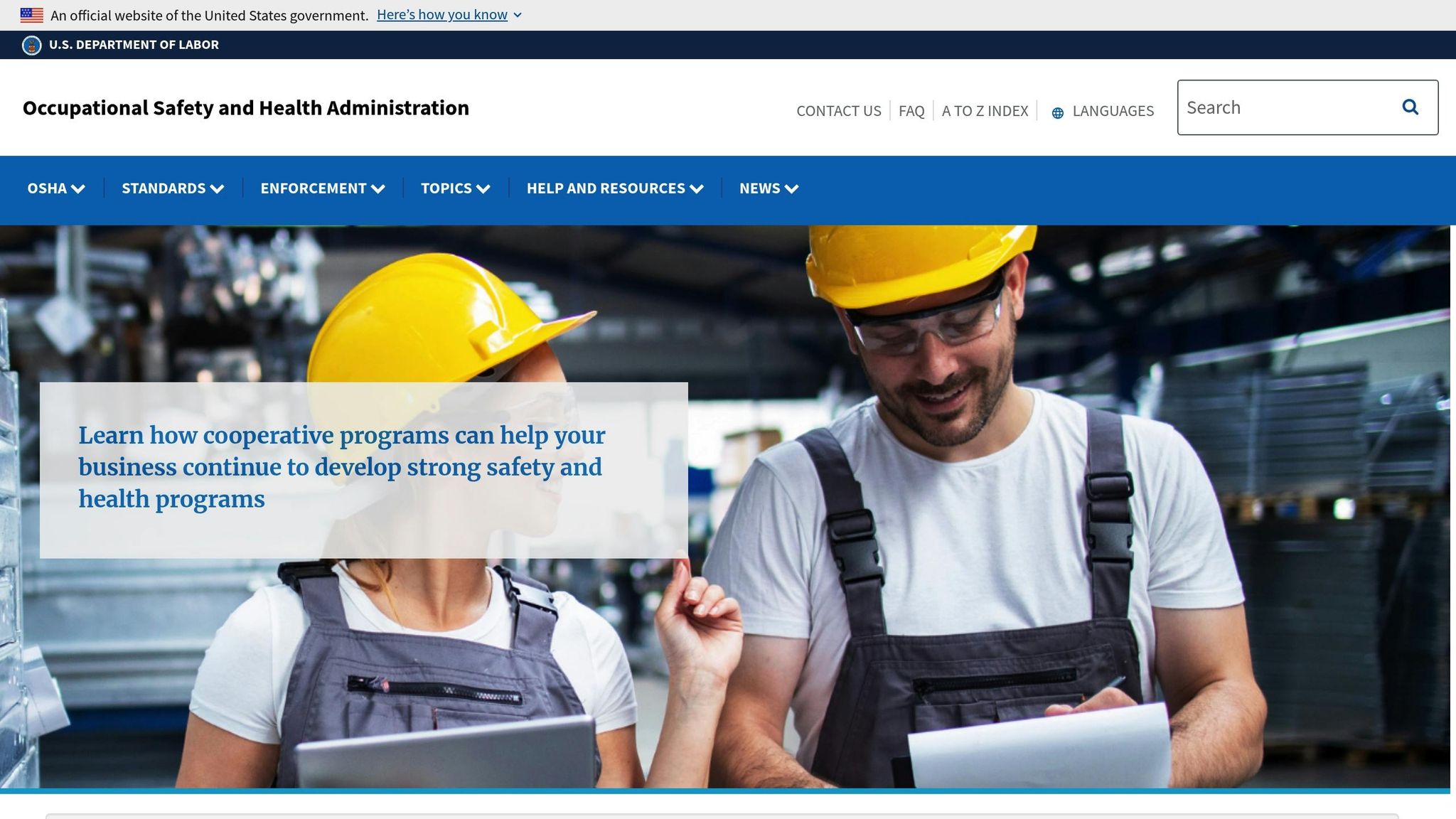Effective entry surveillance is critical for securing buildings and ensuring safety. Modern systems must align with strict standards to meet safety, accessibility, and reliability requirements. Here’s what you need to know:
- Why It Matters: Entry surveillance protects against unauthorized access, documents activity, and aids in emergencies.
- Key Standards:
- Technical Requirements:
- Motion detection with dual sensors (PIR and microwave) to reduce false alarms.
- Continuous recording in high resolution (1080p+).
- Fire-resistant materials and backup power for emergencies.
- Magnetic door and window sensors for monitoring entry points.
Regular maintenance, 24/7 monitoring, and integration with other security systems enhance reliability and effectiveness. Meeting these standards not only ensures compliance but also strengthens overall security.
Key Regulations for Entry and Exit Surveillance
Following specific regulations is crucial when designing surveillance systems for building entry and exit points. These rules ensure systems are safe, functional, and inclusive while meeting established safety standards.
NFPA Standards for Emergency Exits

The National Fire Protection Association (NFPA) provides key guidelines to ensure safety during emergencies. For instance, NFPA 101 mandates clear and unobstructed exit paths, while NFPA 72 requires that surveillance systems integrate seamlessly with fire alarm systems. These standards emphasize that surveillance equipment must never delay evacuations and should include features like backup power and durable enclosures to operate effectively during emergencies. These requirements align closely with OSHA’s workplace safety rules.
OSHA Requirements for Entry and Exit Routes

The Occupational Safety and Health Administration (OSHA) emphasizes that exit routes in workplaces must remain clear and fully operational at all times. Surveillance systems must be designed to avoid obstructing these routes or hindering their use during emergencies. This means ensuring that components like lighting, sensors, or cameras do not interfere with safe passage. OSHA’s focus on workplace safety is further supported by ADA standards, which prioritize accessibility for all individuals.
ADA Accessibility Requirements

The Americans with Disabilities Act (ADA) ensures that surveillance systems are accessible to everyone. This includes placing visual and audible alerts, as well as access controls, at heights and locations that accommodate individuals with disabilities. The goal is to create an inclusive environment where no barriers exist for entering or exiting a building. ADA regulations complement other safety standards by focusing on usability for all.
UL Standards for Sensors and Alarms

Underwriters Laboratories (UL) standards address the reliability and durability of surveillance equipment. These certifications ensure that sensors, alarms, and other components are built to withstand harsh conditions while maintaining consistent performance. By meeting UL standards, surveillance systems are better equipped to handle environmental challenges, reducing the risk of failure and enhancing overall security at entry and exit points.
Technical Requirements for Entry Surveillance Systems
Building on regulatory standards, technical specifications ensure these systems operate effectively under various conditions. Surveillance systems at building entry and exit points must meet precise technical criteria while adhering to the regulatory guidelines outlined earlier.
Motion Detection and Intrusion Prevention
Modern surveillance systems combine PIR (Passive Infrared) and microwave sensors to minimize false alarms by requiring both to detect activity simultaneously. PIR sensors identify heat signatures from moving bodies, while microwave sensors track movement patterns using radio frequencies.
To ensure reliability, these systems should include fail-safe alarm mechanisms with battery backups capable of running for 24 hours during power outages. The backup must support all critical components, such as cameras, sensors, and communication devices.
Entry-point intrusion detection typically employs multiple detection zones with adjustable sensitivity. Primary zones, like main entrances, demand immediate action, while secondary zones – covering areas like loading docks – allow slight delays to accommodate authorized personnel movements.
Door and Secondary Access Monitoring
Magnetic door switches are essential for monitoring all entry points. These switches consist of a magnet mounted on the door and a sensor on the frame. When the door opens, the magnetic field breaks, triggering an alert to the central system.
Cameras should record continuously at a minimum resolution of 1080p to enable facial recognition. Placement is key – ensure cameras capture clear images of individuals entering or exiting without blind spots caused by building design or lighting.
Secondary access points, such as service doors, emergency exits, and ground-level windows, require reinforced sensors. These areas are often overlooked but pose significant security risks. Window sensors, designed for sliding or hinged windows, use magnetic switch technology similar to door sensors.
Integration with access control databases ensures only authorized individuals can enter restricted areas. Unauthorized attempts trigger immediate alerts, log the event, and capture photographic evidence for security personnel.
Fire-Resistant Materials and Emergency Exit Monitoring
Surveillance near emergency exits must be built with fire-resistant materials rated to withstand temperatures up to 1,832°F (1,000°C) for at least 30 minutes. This ensures the system remains functional during fire emergencies, providing critical data on evacuation progress and hazards.
Emergency exit monitoring systems use specialized sensors to differentiate between legitimate emergency use and unauthorized access. Push-bar sensors, for example, detect proper emergency exits while preventing intrusions from outside.
Wiring and conduits for these systems must meet plenum-rated standards when installed in air-handling spaces. These materials are designed to resist flame spread and produce minimal smoke, reducing fire hazards and aiding safe evacuation.
Battery backups are critical for emergency exit monitoring, ensuring key functions like camera recording, sensor detection, and communication remain operational for at least 4 hours during power failures. These systems automatically activate, maintaining full functionality during emergencies.
These technical requirements ensure robust, reliable surveillance systems capable of providing 24/7 monitoring and real-time alerts, as demonstrated by advanced solutions from providers like ESI Technologies.
sbb-itb-ce552fe
Best Practices for Surveillance System Setup
To ensure your surveillance system performs at its best and remains dependable, it’s essential to go beyond just meeting technical requirements and regulatory standards. By following these practices, you can achieve a system that’s both reliable and effective in providing security.
System Maintenance and Testing
Regular maintenance isn’t just a good habit – it can actually extend the life of your surveillance system by up to 40% while cutting down on failures. Did you know that nearly 40% of system malfunctions are caused by power issues alone?.
Keeping camera lenses clean is another critical step. Even a thin layer of dust can slash nighttime visibility by 50% and impact facial recognition accuracy. Outdoor cameras, in particular, need extra attention because they’re exposed to the elements.
Don’t overlook the condition of your cables. Regular inspections can catch wear and corrosion early, which helps prevent system degradation. Adopting a preventive maintenance strategy can reduce system failures by as much as 70%, compared to waiting until something breaks. Keeping detailed records of inspections and maintenance activities helps you track the health of your system over time.
A well-maintained system is always ready to perform, especially when paired with continuous monitoring.
24/7 Monitoring and Alerts
Maintenance is only part of the equation. Continuous monitoring transforms your surveillance system from a passive tool into an active security solution. Real-time alerts can notify you of unauthorized access attempts or other irregular activities at entry and exit points. With mobile alert systems, security personnel can receive updates instantly, allowing them to assess situations quickly through live video feeds.
Having clear response protocols in place for different types of alerts ensures that incidents are managed efficiently and effectively, strengthening your overall security framework.
Connecting with Other Security Systems
Integrating your surveillance system with other security measures – like access control or fire alarms – adds another layer of protection. This kind of integration allows for coordinated responses during emergencies and ensures continuous monitoring, even in critical situations. It also helps you stay aligned with regulatory requirements.
For example, ESI Technologies offers solutions that seamlessly combine surveillance, access control, and fire alarm monitoring, providing round-the-clock protection and peace of mind.
Meeting Standards and Securing Your Building
Sticking to industry standards for entry surveillance isn’t just about following rules – it’s about creating a strong security framework that keeps your business, employees, and visitors safe. Plus, it helps reduce legal risks and financial headaches down the road.
Why Standards Matter
Meeting standards like those set by NFPA, OSHA, ADA, and UL does more than just check a compliance box. It builds a reliable foundation for your security system. By showing due diligence, you protect your business legally, which can lower liability risks and even reduce insurance premiums. On top of that, systems designed to meet these standards often perform better during emergencies, helping you avoid costly maintenance issues. All of this sets the stage for security solutions that fit your building’s specific needs.
Tailored Surveillance Systems
Every building has its own security challenges, and custom solutions are key to addressing them. A thorough site assessment takes into account your building’s layout, lighting, traffic flow, and weak points to design a system that eliminates blind spots and works seamlessly with what you already have. ESI Technologies specializes in creating systems that combine surveillance, access control, and fire alarms, giving you continuous monitoring that can grow as your needs change. Their expert team ensures cameras are placed just right, cables are routed efficiently, and your staff is trained to use the system effectively – so you’re always ready to respond quickly and confidently.
FAQs
What are the advantages of combining entry surveillance systems with access control and fire alarms?
Integrating entry surveillance systems with access control and fire alarms creates a seamless safety network that boosts security and efficiency. This setup enables quicker emergency responses, automates safety protocols, and consolidates monitoring into one centralized system, making security management more effective.
By closing potential security loopholes, this integration ensures smoother evacuations, improves the precision of incident detection, and simplifies system oversight. The outcome? A safer and more efficient environment for businesses and everyone inside.
How do industry standards like NFPA, OSHA, ADA, and UL improve the safety and performance of entry surveillance systems?
Industry standards are essential for ensuring that entry surveillance systems operate safely and efficiently. Here’s how some key standards contribute to this goal:
- NFPA standards (like NFPA 101): These focus on fire and life safety, ensuring buildings are designed for safe evacuation and effective crowd management during emergencies.
- OSHA standards: These enhance workplace safety by mandating proper training, clear hazard communication, and protocols for those who operate or maintain surveillance systems.
- ADA standards: These improve accessibility, ensuring surveillance systems are designed to accommodate individuals with disabilities, promoting usability and compliance.
- UL standards: These certify that surveillance equipment meets stringent safety and performance benchmarks, minimizing the risk of malfunctions or failures.
By following these standards, businesses can develop entry surveillance systems that not only safeguard property but also prioritize the well-being of everyone involved.
What should be considered to ensure entry surveillance systems comply with ADA accessibility requirements?
To meet ADA standards, entry surveillance systems must include a clear area measuring at least 30 by 48 inches around access devices. This ensures smooth navigation for individuals who use wheelchairs. Furthermore, devices such as keypads, card readers, and intercoms should be installed along accessible routes and positioned at heights that are usable for everyone. These steps are crucial for ensuring fair access and adhering to ADA guidelines in public and commercial spaces.

